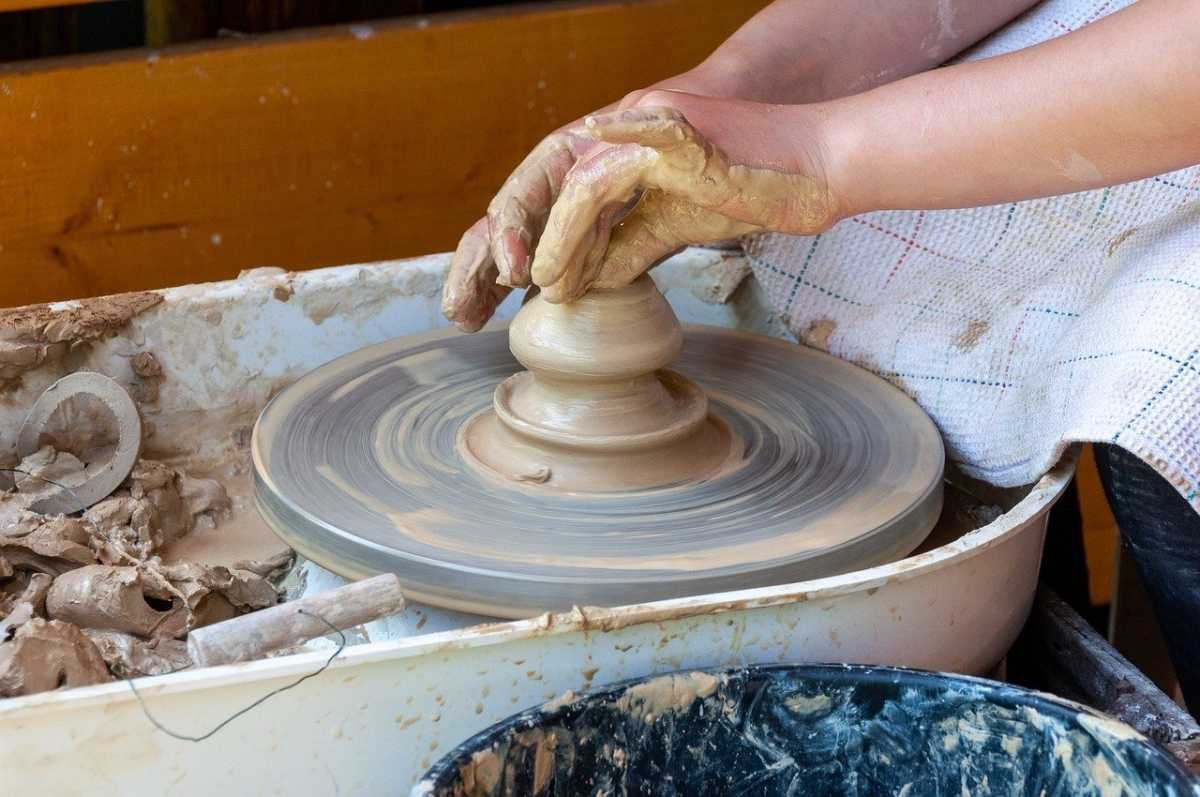Turning a hobby into a profitable business is the dream of many people. Whether you’re passionate about crafting, photography, writing, or gardening, the idea of doing what you love while making money from it is incredibly appealing.
However, transforming a hobby into a business requires careful planning, commitment, and an understanding of the market.
This blog will walk you through the step-by-step process of turning your passion into a thriving business, helping you navigate the challenges and maximize your chances of success.
Understanding the Potential of Your Hobby

Before you embark on turning your hobby into a business, it’s essential to evaluate its profitability. Not every hobby can easily be monetized, so the first step is to understand the potential of your passion as a business. Ask yourself the following questions:
- Is there a demand for your hobby? Do people want to pay for the products or services you offer through your hobby?
- Can it be scaled up? If you’re selling handmade products, for example, can you produce them in larger quantities without sacrificing quality?
- What is the competition like? Are there many others offering similar products or services? If so, how can you differentiate yourself?
Taking the time to thoroughly research your market will help you determine if your hobby has the potential to become a profitable business. It’s also essential to ensure that your hobby won’t lose its enjoyment once it turns into work.
2. Market Research: Identifying Your Audience and Competitors
Once you’ve assessed the potential of your hobby, the next step is to conduct market research. This will help you identify your target audience and understand what they are looking for, as well as give you insight into your competition.
- Who is your target audience? Determine who is most likely to buy your product or service. Consider factors like age, gender, location, interests, and purchasing habits. Understanding your target audience will allow you to tailor your business to meet their specific needs.
- What do they need? Analyze the pain points of your target market and think about how your hobby-based business can provide solutions. If you’re turning a baking hobby into a business, for instance, are there dietary restrictions or trends (like gluten-free or vegan) that you can cater to?
- Competitor analysis: Look at businesses that are already operating in your niche. Examine their products, pricing, marketing strategies, and customer reviews. What are they doing right, and what gaps can you fill? This will help you find a competitive edge and position your business for success.
Market research is an essential part of planning because it allows you to fine-tune your business idea and ensure that there’s a viable market for what you offer.
3. Setting Clear Goals and Objectives
For your hobby to successfully evolve into a business, you need to set clear goals and objectives. It’s essential to define what you want to achieve with your business and create measurable, actionable steps to get there.
- Short-term goals: These might include setting up a website, creating a product prototype, or making your first few sales. Short-term goals should be specific and achievable within a few months.
- Long-term goals: Long-term goals involve broader milestones such as achieving a certain amount of revenue, expanding your product line, or hiring your first employee. These are goals that you aim to achieve in a year or more.
- SMART goals: Ensure your goals are SMART—Specific, Measurable, Achievable, Relevant, and Time-bound. For example, instead of saying “I want to make money,” a SMART goal would be, “I want to earn $10,000 in revenue from my handmade jewelry business in the next 12 months.”
Having clear goals will give you direction and motivation, helping you stay focused as you build your business.
4. Creating a Business Plan

A business plan is essential for turning your hobby into a structured and organized business. Even if you’re starting small, having a roadmap will keep you on track and guide your decisions.
A good business plan should include the following:
- Executive summary: A brief overview of your business, including what you offer, who your target audience is, and what your goals are.
- Market analysis: The insights you’ve gained from your market research, including the demand for your products/services and a competitor analysis.
- Products and services: A detailed description of what you’re selling. If your hobby involves creating physical products, you should include information on your production process, costs, and any unique selling points (USPs).
- Marketing plan: How do you intend to reach your target market? Include strategies for social media marketing, email campaigns, paid ads, or partnerships.
- Financial plan: Estimate your startup costs, projected revenue, and ongoing expenses. Include a profit and loss forecast to get an idea of how long it will take for your business to become profitable.
A business plan doesn’t have to be overly complicated, but it should provide a clear blueprint for building and growing your hobby-based business.
5. Start Small and Scale Gradually
One of the common mistakes new entrepreneurs make is trying to do too much too soon. When transitioning your hobby into a business, it’s important to start small and scale gradually.
- Start with a minimum viable product (MVP): This is a simplified version of your product that is sufficient to meet customer needs without all the bells and whistles. Launching an MVP allows you to test the waters and gather feedback before investing heavily in full-scale production.
- Test the market: Before diving in headfirst, test your product or service with a small group of potential customers. This could be done by selling to friends, family, or through an online marketplace. Gathering feedback at this stage will help you make improvements and refine your offerings.
- Focus on building brand awareness: Even if you don’t have a large inventory, start building your brand presence on social media, through a blog, or by attending local events. This will help you establish a customer base while you continue to grow your business.
Taking gradual steps allows you to minimize risk, learn as you go, and build a more sustainable business.
6. Monetization Strategies: How to Make Money from Your Hobby
The key to turning your hobby into a business is finding ways to monetize it effectively. Depending on your hobby, there are various monetization strategies you can explore.
- Selling physical products: If your hobby involves creating physical goods (e.g., art, jewelry, clothing), you can sell these products directly to customers via online platforms like Etsy, eBay, or your own website.
- Providing services: If your hobby is based on a skill like photography, writing, or coaching, you can offer your services to clients. You could start by offering services on freelancing platforms such as Upwork, Fiverr, or local classifieds.
- Offering digital products: Many hobbies can be turned into digital products, such as online courses, eBooks, or printables. If you have expertise in a particular field, you can package your knowledge and sell it to others who are interested in learning.
- Affiliate marketing: If your hobby involves blogging or creating content, you can monetize your platform through affiliate marketing. This involves promoting other people’s products or services and earning a commission for each sale made through your referral.
- Sponsored content: As your audience grows, brands might approach you for sponsorship deals. This is especially common for hobbies that involve content creation, such as blogging, vlogging, or podcasting.
Monetizing your hobby will depend on the nature of your passion and the demand for what you offer. Be open to exploring multiple streams of income to maximize your earnings.
7. Building Your Brand: The Importance of Authenticity
Building a strong brand is crucial for turning your hobby into a successful business. Your brand represents who you are and what your business stands for, and it’s how customers will recognize and connect with you.
- Brand identity: Start by defining your brand identity, including your business’s mission, values, and unique selling points (USPs). What sets you apart from the competition? How does your business reflect your personal style and values?
- Visual branding: Your brand’s visual elements—such as your logo, color scheme, and website design—should reflect your brand’s personality. Consistency is key, so use the same colors, fonts, and imagery across all your platforms.
- Authenticity: Authenticity is one of the most important aspects of building a brand. Your customers want to connect with the person behind the business, so be transparent and genuine in your communications. Share your story, the challenges you’ve faced, and what inspires your passion.
- Engagement: Building a brand goes beyond just creating a logo. It’s about creating relationships with your customers. Engage with your audience through social media, respond to comments and feedback, and create content that resonates with them. Building a community around your brand will help foster loyalty and keep customers coming back.
A strong brand is essential for establishing trust and standing out in a crowded market.
8. Marketing Your Business: Reaching the Right Audience

Marketing is a crucial part of turning your hobby into a business. You need to find effective ways to reach your target audience and convince them to purchase your products or services.
- Social media marketing: Social media platforms like Instagram, Facebook, Pinterest, and TikTok are excellent tools for promoting your hobby-based business. Share behind-the-scenes content, product launches, and customer testimonials. Use hashtags and collaborations to increase your visibility.
- Content marketing: If you enjoy writing or creating videos, content marketing is a great way to showcase your expertise. Start a blog or YouTube channel where you can share tips, tutorials, and insights related to your hobby. This not only drives traffic to your website but also positions you as an authority in your niche.
- Email marketing: Build an email list by offering freebies or discounts in exchange for emails
conclusion
Turning your hobby into a profitable business is both an exciting and challenging journey. It starts with passion but requires a structured approach, clear goals, and a solid understanding of the market. By conducting thorough research, crafting a solid business plan, and starting small, you can gradually build a sustainable and scalable business.
Monetizing your hobby involves exploring different revenue streams, whether through selling physical or digital products, offering services, or even partnering with brands. The key to long-term success lies in creating an authentic brand that resonates with your target audience and fostering relationships through effective marketing strategies.
Above all, it’s essential to stay committed to your passion while remaining adaptable and open to learning. By following these steps, you can turn your favorite pastime into a thriving business, allowing you to not only do what you love but also make a living from it. Remember, the road to success may have its challenges, but with persistence and dedication, you can transform your hobby into a rewarding and profitable venture.

